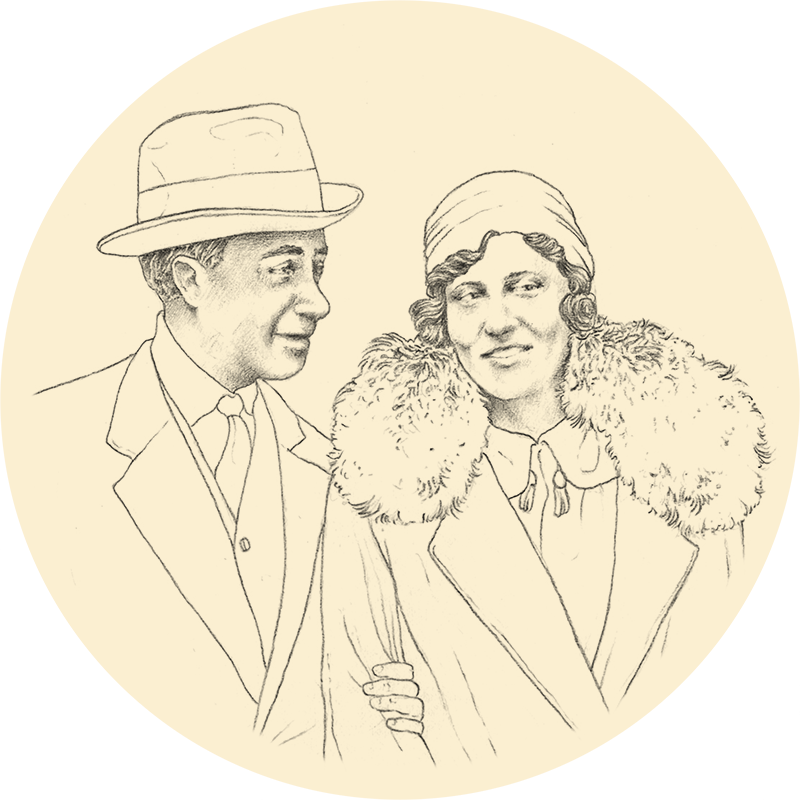An obsession is an obsession, not a game. You were a concrete person, Antonio. You worked at Pirelli for years, you were a very refined technician. You went to the Bicocca zone every day, to that city on the outskirts of the city made of factories, smokestacks, fumes and sweat, effort and innovation. Almost nothing remains of that industrial history, today. Houses, residences, an enormous theater, a shopping center. And the university, the new factory of knowledge and skills. Right at the entrance to this new district they’ve named a little street after you, Via Boschi-Di Stefano, as is in the nature of Milan, which continuously changes, remaining only in the memory of its place names. You were the creator of many important patents. The most famous, the GIUBO (“giunto Boschi,” of course), is a shaft coupling that is still produced and sold today all over the world. Practically every automobile or boat motor has one. So with your technical-scientific culture, that of “noster politeknik,” you were able to have sufficient funds to indulge in your obsession.
To give form to things hands are needed, Marieda, you knew that. You never stopped working with clay, shaping it, firing it. You never stopped being a ceramist, your obsession. In the end, you did it. In 1962 you opened a school, with a kiln. No more perilous trips to Curti, in the canal zone. The school was there, on the ground floor of the building constructed by your father, where you lived. Home, workshop, school. The dream of a lifetime came true. You passed away a few years later, in 1968. The school continues to exist, in your honor, named for you, thanks to the devotion of your lifelong friend, Migno, the daughter of your mentor from over half a century ago.
It was hard for you, Antonio, to go on, to survive without Marieda. You had no children, just cats – nine of them – roaming around the house. You plunged even deeper into your obsession. There was a project that had to be completed. To narrate a life through art. To narrate the conditions of a fully modern society, with the loftiest, most experimental works. To grant dignity to a troubled century that had known dizzying heights and great falls.
You were a man of the modern age, you did not live cut off from the world. But you knew that the Enlightenment myth of technology, after the abyss of World War II, was crumbling. In art, you sought the philosophical response to the loss of rational certainties. Chaos had ruled the world, the city was losing its form, taking on a new, magmatic shape. There was a need to see through art, as through a breach, to understand what could be perceived beyond the veil of the real. This is why you loved the Italian artists, your fellow traveling companions, the only ones you had gathered, in substance; this is why you loved the Informale, the superior, sublime form of the world. This is why you loved Fontana and his fissures.
To do so, you needed nails and walls. And you needed Nando, a worker from Pirelli you were fond of, to help you put the works in order. Remove, place, drive nails, hang paintings. He often cooked up a big pot of pasta and put it in the refrigerator. And then you would heat it up for dinner, or lunch. Eating was a necessity, not a pleasure. You had other things on your mind.
«We started collecting to help the poor artists,» you told a friend. Now all this beauty, this material philosophy, could not remain there, sterile, to satisfy the obsession of just one person. In the end, the collection wasn’t even yours. You had started it together, you and Marieda. «A shared work, in the total sense,» you said one day, remembering your wife. «In the material sense, with the implications of decisions, of dedication, of financial sacrifices and subsequent renunciations in other areas; and in the artistic sense, as converging of tastes, orientations, choices.»
The project was finished, the story of the life of a couple in perfect symbiosis told not with words but with artworks, had come to an end. Now it was time to share it with others, this long path of two kindred souls that met by chance in Val Sesia, never again to part. It was time to abandon your obsession and transform it into a gift. For the city. That was in 1988.
